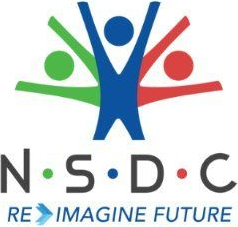Companies Need Robust People Strategy to Navigate the GenAI Paradox

McKinsey and BCG say most firms use GenAI, but almost nobody sees real financial results. Even billion-dollar investments can’t fix what’s at the heart of the “AI paradox.” The real problem? It’s not tech—it’s people, silos, and shaky strategy.
- Widespread Use, But Little Impact: Nearly 80% of businesses have integrated GenAI in some form, yet a similar percentage report zero meaningful effect on P&L statements—a phenomenon McKinsey dubs the “GenAI Paradox.” The problem? Most deployments focus on horizontal tools like copilots and chatbots that boost productivity broadly but fail to deliver clear, concentrated financial value.
- The Real Roadblocks Are Human, Not Technical: According to BCG and McKinsey, AI’s potential is stalled not by immature technology, but by organizational hurdles—lack of skilled talent, insufficient top-level sponsorship (fewer than 30% of CEOs drive the AI agenda), fragmented initiatives, and hesitant CFOs demanding rapid ROI before strategic value can accrue.
- Agentic AI Mesh: The Next Frontier—But Change Needs Champions: McKinsey’s proposed “agentic AI mesh” envisions an architecture where human and AI agents work in tandem across a modular, governed ecosystem. Yet the biggest challenge ahead isn’t tech debt or risk controls—it’s earning trust, managing people and processes, and orchestrating meaningful adoption at scale
Consulting firms like McKinsey are usually driven by techno-optimism in the projections about the economic value expected to be unlocked from new technologies. However, this time around, they have created ripples, across the industry, with a rather uncharacteristic report, on what they label as the GenAI Paradox. McKinsey issued a stark warning; “Nearly eight in ten companies report using gen AI—yet just as many report no significant bottom-line impact. Think of it as the “gen AI paradox.” GenAI, is everywhere except in the P&L statements, is a cryptic remark from the firm that has stirred up a huge discussion in the industry.
Concurrently, the firm has introduced a solution as well. A new AI architecture paradigm—the agentic AI mesh—is needed to govern the rapidly evolving organizational AI landscape and enable teams to blend custom-built and off-the-shelf agents while managing mounting technical debt and new classes of risk. But the bigger challenge won’t be technical. It will be human: earning trust, driving adoption, and establishing the right governance to manage agent autonomy and prevent uncontrolled sprawl.
Nevertheless, it appears that monetization of GenAI has been elusive for quite some time now. A Gartner report a year ago blamed CFOs saying: “At least 30% of GenAI projects will be abandoned after proof of concept by the end of 2025, due to poor data quality, inadequate risk controls, escalating costs or unclear business value. Historically, many CFOs have not been comfortable with investing today for indirect value in the future. This reluctance can skew investment allocation to tactical versus strategic outcomes.”
Consulting firm BCG, makes a valuable point in the current disillusionment with GenAI. According to BCG Research, one in three companies are committing at least $25 million to AI. Yet deep pockets alone don’t guarantee adoption; even in a traditionally capital-rich industry like insurance, for example, overall AI maturity hasn’t moved beyond the experimental stage. Executives can focus on key adoption strategies defined by the 10–20–70 rule: while tech and data make up 10% and 20% of the effort, the remaining 70% of the focus should be on people and processes.
An AWS Survey also underscores the people issue as a major concern area in organizations missing out on the value of GenAI. The fear of missing out is pushing a lot of leaders to jump in without a clear view of where they’re going. That’s dangerous. As organizations move forward with GenAI, they’re identifying problem areas and places that need further attention. According to the survey, the top barriers including lack of a skilled workforce (cited by 55%); cost of development (48%); biases and hallucinations (40%); no compelling use case (19%); and lack of data (18%).
But the picture is not all that dismal. Gen AI has extended the reach of traditional AI in three breakthrough areas: information synthesis, content generation, and communication in human language. McKinsey estimates that the technology has the potential to unlock $2.6 trillion to $4.4 trillion in additional value on top of the value potential of traditional analytical AI. Two and a half years after the launch of ChatGPT, gen AI has reshaped how enterprises engage with AI. Its potentially transformative power lies not only in the new capabilities gen AI introduces but also in its ability to democratize access to advanced AI technologies across organizations.
Explaining the GenAI Paradox the consulting firm points out that the heart of the paradox lies an imbalance between horizontal and vertical use cases Many organizations have deployed horizontal use cases, such as enterprise-wide copilots and chatbots; nearly 70 percent of Fortune 500 companies, for example, use Microsoft 365 Copilot. These tools are widely seen as levers to enhance individual productivity by helping employees save time on routine tasks and access and synthesize information more efficiently. But these improvements, while real, tend to be spread thinly across employees. As a result, they are not easily visible in terms of top- or bottom-line results.
Lack of CEO enthusiasm about GenAI is another factor in the slow adoption of this technology. The McKinsey survey finds that fewer than 30 percent of companies report that their CEOs sponsor their AI agenda directly. This has led to a proliferation of disconnected micro-initiatives and a dispersion of AI investments, with limited coordination at the enterprise level. — Lack of mature, packaged solutions.


